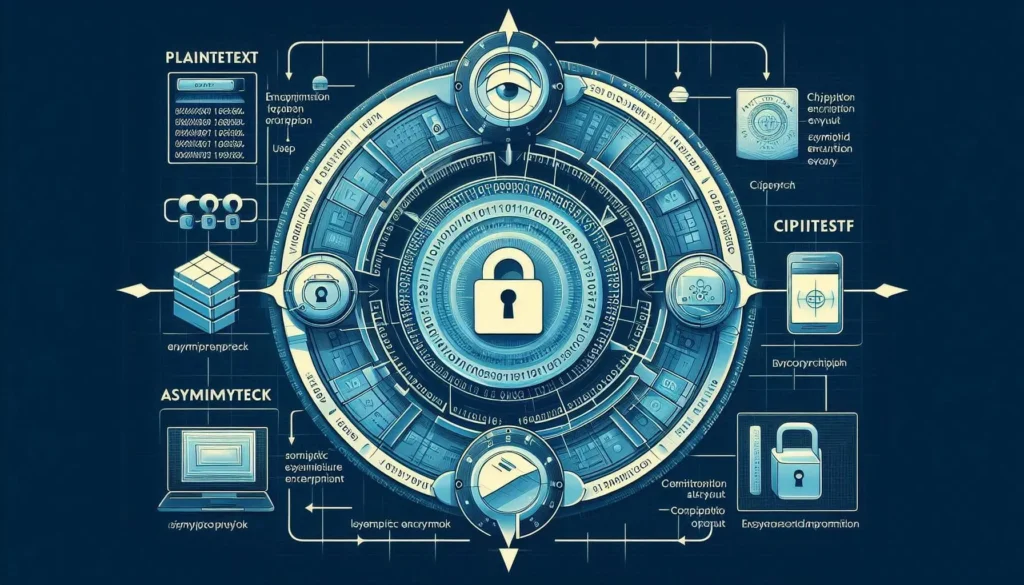
In the age of digital transformation, ensuring the security of data has become a crucial challenge for both individuals and businesses. Two common techniques for safeguarding information are encryption and hashing. While both serve as methods of securing data, their purposes, mechanisms, and applications differ significantly.
In this post, we will dive into the differences between encryption vs hashing, helping you understand when to use each. By the end, you’ll have a clear idea of which technique is right for your
What is Encryption?

Encryption is the process of converting plaintext data into an unreadable format, known as ciphertext. The goal of encryption is to protect data from unauthorized access by ensuring only authorized parties can decode it.
There are two main types of encryption:
- Symmetric Encryption: Uses the same key for both encryption and decryption. It’s faster but less secure if the key is compromised.
- Asymmetric Encryption: Uses two different keys—a public key for encryption and a private key for decryption. This method is more secure but slower.
Encryption allows sensitive data, such as passwords, credit card numbers, and confidential emails, to remain secure even if intercepted.
What is Hashing
Hashing is a one-way process that converts data into a fixed-size string of characters, which is typically a hash value. Unlike encryption, hashing is not meant to be reversible. Once data is hashed, it cannot be transformed back into its original form.
The main purpose of hashing is to ensure data integrity. It’s widely used for verifying file contents, storing passwords securely, and checking data against tampering.
Popular hashing algorithms include:
- MD5: A fast but now outdated algorithm.
- SHA-256: A secure and widely-used hashing algorithm.
- Bcrypt: A slow hashing algorithm commonly used for password storage.
Key Differences : Encryption Vs Hashing
Although encryption and hashing both deal with data transformation, they serve very different purposes. Let’s break down the key differences:
| Feature | Encryption | Hashing |
|---|---|---|
| Purpose | Secure data for confidentiality | Ensure data integrity |
| Reversibility | Reversible (decryptable) | Irreversible (one-way) |
| Use of Keys | Uses keys (symmetric or asymmetric) | No keys used |
| Use Case | Secure communication and sensitive data | Password storage and file verification |
| Example Algorithms | AES, RSA, DES | MD5, SHA-256, Bcrypt |
Use Cases for Encryption
Encryption is commonly used in scenarios where the confidentiality of data is paramount. Some examples include:
- Securing Communications: Messages, emails, or files sent over a network are encrypted to prevent unauthorized access. Email providers like Gmail use encryption protocols (like SSL) to protect user data.
- Disk Encryption: Devices like laptops and smartphones often use disk encryption to safeguard data in case of theft. Popular software like BitLocker or FileVault helps with this.
- SSL/TLS in Web Browsing: Websites use SSL/TLS certificates to encrypt data transmitted between the server and users’ browsers. This ensures that sensitive information like credit card numbers or login details are secure
Use Cases for Hashing
Hashing plays a vital role in ensuring the integrity and authenticity of data. Here are some use cases:
- Password Storage: Rather than storing passwords in plaintext, websites hash passwords to protect them. Even if the hashed passwords are stolen, they can’t be easily reverted to their original form.
- Data Verification: When downloading a file, checksums (hashes) are used to verify that the downloaded file hasn’t been altered or corrupted. The user compares the file’s hash to the known hash.
- Digital Signatures: Hashing is a critical part of digital signatures, which verify the authenticity of digital messages and documents without exposing the original content.
Security Considerations: When to Use Encryption vs Hashing
When comparing Encryption vs hashing, it’s important to consider the specific security requirements of your project:
- When to Use Encryption: If you need to protect the confidentiality of sensitive data (like financial information, confidential messages, or personal identification), encryption is the way to go. Since encryption can be reversed with the correct key, authorized users can decrypt and access the original data.
- When to Use Hashing: If you need to verify the integrity of data (like passwords or downloaded files) without needing to recover the original data, hashing is ideal. Because hashing is irreversible, it’s the preferred choice for situations where you need to ensure data has not been altered.
Conclusion
While debating encryption vs hashing, Both are powerful tools in the realm of cybersecurity, they serve distinct purposes. Encryption ensures that your data remains private and confidential, while hashing guarantees the integrity of data by making it impossible to reverse.
Choosing the right method depends on your security needs. If you need to recover the original data, encryption is your best bet. If you only need to verify that data hasn’t been tampered with, hashing is the way to go.
By understanding the differences between encryption and hashing, you can make better decisions about securing your digital assets
Must Read – Understanding Blockchain Data Storage: How and Where Data is Stored in blockchain

